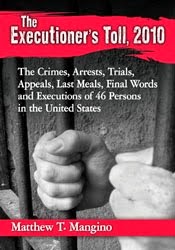Monroe County, Pennsylvania Sheriff Todd Martin offers the following insights and explanations about Pennsylvania's gun licensing/permitting rules in a recent Interview with The Pocono Record.
Q: Do you need a permit (or a license) to purchase a gun in Pennsylvania?
A: No, though it does assist the process that the licensed firearms dealer must go through under the guidelines set by the Pennsylvania State Police.
The state police run a program called PICS (Pennsylvania Instant Check System) for background checks to determine if the individual is eligible to acquire/purchase a firearm or still be considered eligible to possess a "License to Carry a Concealed Firearm."
Q: Do you need a permit or a license to own a gun?
A: No, a License to Carry a Concealed Firearm is not required to own a firearm. Those residents wishing to own a long gun or handgun may do so and store them within their residence or place of abode. Only those wishing to carry a handgun concealed would be required to attain and possess a current License to Carry a Firearm.
To name a few exceptions by law under Pennsylvania Title 18 Section 61 are as follows: Law enforcement officers, members of the Army, Navy, Marines, Air Force, Coast Guard and National Guard Reserves while on duty. Any person engaged in target shooting while traveling directly to and from the range as long as the firearm is secured and not loaded. Any person licensed to hunt or fish as long as they are actually hunting or fishing.
Other than those listed by law, any person who carries a firearm in any vehicle or on or about their person, except in their residence or place of abode or fixed business, without a valid and lawfully issued license under PA Title 18 Section 6106 commits a felony of the third degree.
Even with a License to Carry a Firearm, places that licensees are not permitted to carry a firearm are: schools and school properties, court facilities, state and federal buildings or properties, bars and taverns or any public or private property properly posted conspicuously prohibiting the same.
Q: When and where and what can you carry without a concealed-carry permit?
A: Though Pennsylvania has a specific law that requires a License to Carry Firearms for the concealed carry of a firearm, and the carry of firearms in vehicles, the law has been somewhat silent on the legality of openly carrying a firearm in other situations, making it de-facto legal.
To summarize, open carry is legal in Pennsylvania except in "cities of the first class" (Philadelphia) and vehicles where a License to Carry a Concealed Firearm is required.
There has been much debate over recent years from firearm owners about whether openly carrying firearms is truly a good idea. While the choice is up to the individual, in the past it has drawn much concern and unwanted attention from the general public and law enforcement alike.
Q: When, where and what can you carry with a carry permit?
A: You may carry a concealed firearm with a license in all areas and places unless prohibited by law as explained above.
Q: What happens when a person applies for a concealed-carry permit? Do they need references? Undergo a background check? If so, is it through a state or federal database?
A: Any Monroe County resident, 21 years of age or older, may apply in the Sheriff's Office for a License to Carry a Concealed Firearm on or about their person or in a vehicle within the commonwealth.
If the applicant is a bonafide resident of this county, he or she is required to make application only with the sheriff of the county in which he or she resides.
Upon acceptance of the application, the applicant is photographed and required to sign their name depicting that all of the information provided is true and correct.
The Sheriff's Office is then required to run a PICS check on the applicant in order to attain a PICS number authorizing an approval from the Pennsylvania State Police to move forward with the process. If the applicant is denied by the Pennsylvania State Police he/she must then contact PSP directly to challenge that denial.
If the applicant is approved via PICS, the Sheriff's Office is then required to conduct an investigation into the applicant's past and present background to determine if they meet all the requirements to attain a license.
Some of those requirements are as follows: It must be determined that the applicant has never been convicted of any crime under the Controlled Substance, Drug and Cosmetic Act of 1972; is not an individual addicted to or is an unlawful user of marijuana or stimulant, depressants or narcotic drug or is a habitual drunkard; if they are of sound mind or has ever been committed to a mental institution; is an individual who is currently charged with or has been convicted of a crime punishable by imprisonment for a term of one year; an alien who is illegally in the United States; a person who has been dishonorably discharged from the armed forces; or a person who is otherwise prohibited from possessing, using, manufacturing, controlling, purchasing, selling or transferring a firearm by law.
The Sheriff's Office has 45 days to complete the investigation and either issue, extend the 45 days for "just cause" or deny the applicant.
The Sheriff's Office also contacts local, regional, county and state law enforcement agencies to provide any pertinent background information or records they may have as a record of any reportable incidents the applicant may have been involved in.
Search all court records to determine if the applicant has in the present or past been involved in any incident involving Domestic Violence or Protection From Abuse Orders or other court related matters. The applicant also provides the Sheriff's Office with references (non-related) to also contact for confirmation of their character and reputation within the county or other state they may have lived in.
Q: Does Pennsylvania have reciprocity with adjoining states? That is, if I have a license in New York, does that count for anything in Pennsylvania?
A: Pennsylvania has reciprocity agreements with the following states for Licenses to Carry a Concealed Firearm: Alaska, Arizona, Arkansas, Colorado, Florida, Georgia, Idaho, Indiana, Iowa, Kentucky, Louisiana, Maine, Michigan, Missouri, Montana, New Hampshire, North Carolina, North Dakota, Oklahoma, South Dakota, Tennessee, Texas, Utah, Vermont, Virginia, West Virginia, Wisconsin and Wyoming.
Q: What's the difference between an illegal straw purchase vs. buying a gun and selling it to someone else at some time in the future?
A: "A straw gun purchase is any purchase wherein someone agrees to acquire a good (firearm) or service for someone who is unable (by law) or unwilling to purchase the good or service himself. Straw service purchases are legal except in cases where the ultimate receiver of goods (firearm) or service uses those goods or services in the commission of a crime with prior knowledge that the straw purchaser is prohibited to purchase or possess the goods (gun) or services."
Straw purchase can be illegal when made at a federally licensed firearms dealer. If the straw purchaser of the firearm lies about the identity of the ultimate possessor of the gun, he can be charged with making false statements on a Federal Firearms Transaction Record.
If a firearm is purchased as a gift, the purchaser must indicate the intended recipient on the transaction record. Straw purchases of used guns are not illegal, again, unless the gun is used in a crime with prior knowledge of the straw purchase.
Q: Background checks: Are they required at gun shows?
A: Presently 17 states regulate private firearms sales at gun shows. Seven states require background checks on all guns at gun shows (California, Rhode Island, Connecticut, Oregon, New York, Illinois and Colorado).
Four states require background checks on all handgun sales, but not long guns (Hawaii, Maryland, New Jersey and Pennsylvania); 33 states have no such regulations.
Q: Does the state have any rules or prohibitions against ownership of an "assault weapon"?
A: These rules guidelines are defined and enforced by ATF (Alcohol, Tobacco & Firearms).
Q: What defines an assault weapon?
A: The term "assault weapon," when used in the context of assault weapon laws, refers primarily (but not exclusively) to semi-automatic firearms that possess the cosmetic features of an assault rifle that is fully automatic.
Actually possessing the operational features, such as "full-auto," changes the classification from assault weapon to Title II weapons. Merely the cosmetic features are enough to warrant classification as an assault weapon. Semi-automatic firearms, when fired, automatically extract the spent cartridge casing and load the next cartridge into the chamber, ready to fire again. They do not fire automatically like a machine gun; rather, only one round is fired with each trigger pull.
Q: How old do you have to be to own a gun?
A: Under PA Title 18 Section 6110.1 a person under 18 years of age shall not possess or transport a firearm anywhere in this commonwealth. Once again, there are exceptions such as while they are under the direct supervision of a parent, grandparent, legal guardian or an adult acting with the expressed consent of the minor's custodial parent or legal guardian and the minor is engaged in lawful activity, including safety training, lawful target shooting, engaging in an organized competition involving the use of a firearm or the firearm is unloaded and the minor is transporting it for lawful purposes; or who is lawfully hunting or trapping under PA Title 34.
Q: Are there any kinds of weapons that one can own but not carry even with a conceal carry permit?
A: A License to Carry a Concealed Firearm is for the carrying of only a firearm by definition as follows under PA Title 18 Section 6102: "Any pistol or revolver with a barrel length of less than 15 inches, any shotgun with a barrel length less than 18 inches or any rifle with a barrel length of less than 16 inches, or any pistol, revolver rifle or shotgun with an overall length of less than 26 inches. The barrel length of a firearm shall be determined by measuring from the muzzle of the barrel to the face of the closed action, bolt or cylinder, whichever is applicable."
To read more.
http://www.poconorecord.com/apps/pbcs.dll/article?AID=/20130318/NEWS/303180326








